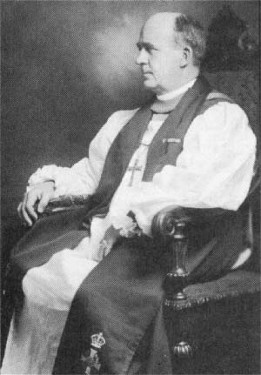|
Capt R.J. Renison
|
|
|
|
Toronto Globe & Mail October 7, 1957 Most Rev. R. J. Rension a retired Archbishop of Moosonee and Metropolitan of Ontario died yesterday in Toronto General Hospital at the age of 82. Funeral services will be held Wednesday at 3PM in St Paul’s Church Bloor St W. The witty Anglican churchman from Tipperary who, at 76, became Metropolitan of the Ecclesiastical Province of Ontario was born Robert John Benison and spent 10 years among the trappers, prospectors and construction men who opened up the North. As Archbishop of Moosonee, he learned the language of the Ojibway Indians and liked to predict that the future of Ontario’s northland would one day outshine its past. He first met the Indians as a boy after his father, the late Rev. Robert Renison, brought his family to Canada from Ireland in 1853. He came as a Church of England missionary to work in the rugged diocese of Algoma in Northern Ontario. Young Robert developed a liking for the sturdy Ojibways who lived near what was then the pioneer settlement of Sault Ste. Marie. It was there he resolved to do missionary work among the northern natives. While pursuing his studies which took him to Trinity College School, Port Hope, University of Toronto and Wycliffe College, he joined the Inniskillen Fusiliers and his father had to buy his release. Born Sept 8, 1875, he was 21 when he went north to the James Bay country as a missionary traveling much of the way by canoe. He spent 14 years among the Ojibways and Crees around Hudson Bay and James Bay, learned their tribal lore and translated hymns into the Indian tongues. He paddled down every Ontario river emptying into James Bay and walked on snowshoes into the small town site that was to become Cochrane. Some of the Indians who became his friends were cannibals. “It was not uncommon” he once told an interviewer. “They used to scatter from Moose Factory for hundreds of miles to hunt. If the fish, rabbits and deer failed the, the weaker ones died. “Once they had eaten their dead, I think their minds became affected. The old Wendigo superstition was associated with cannibalism.” He returned south in 1912 to become rector of the Church of the Ascension in Hamilton. Except for overseas service during the First World War, he remained there for the next 15 years, the last three as Archdeacon of Hamilton. He revisited the north in 1915 to recruit Indian trackers for a forestry unit. After marching his recruits 350 miles to Camp Borden he was told his men were unsuitable for military service because they had flat feet. He went overseas himself as chaplain of the 21st Battalion, a Kingston unit, and was chaplain of the 4th Infantry Brigade in France and Belgium. Becoming rector of Christ Church, Vancouver, in 1927, he was made dean of New Westminster in 1928 and Bishop of Athabaska, in the Peace River country two years later. He moved to Toronto in 1932, taking over the parish of St Paul’s when the late Canon H. J. Cody became president of the University of Toronto. He stayed at St Paul’s for 11 years. Elected bishop of Moosonee in 1943 he returned to familiar territory as head of Canada’s second largest Anglican diocese, covering 350,000 square miles. Only the diocese of the Artic was larger. He traveled 5000 miles a year by aircraft, canoe, dog team and snow shoes to minister to the 105,000 scattered residents of his diocese. His knowledge of the Indian language enabled him to preach in their own language to the people who called him Shegoos – which means “the good medicine man who comes once a year.” He was elected Metropolitan in May 1952, succeeding Most Rev. John. R. Lyons, of Kingston who resigned due to ill health. Bishop Renison was the author of the Indian Cree Hymn Book, The Life of Bishop Sullivan, and Canada and War. He also published Wednesday Morning and "For Such a Time as This", which he described as collections of sermonettes, most of which had appeared in his weekly columns on the editorial page of the Globe and Mail. He was also the author of numerous essays and articles. Awarded the King’s Jubilee Medal in 1933, he was also a Freemason Scottish Rite and his recreations were fishing, shooting and golf. He married Elisabeth Maud Bristol of Hamilton in 1914. They had two sons. As archbishop designate he was asked whether he planned to continue his trips through the North Country. “As much as I can.”, he replied” I shall return first to my home in Schumacher. It will be a year at least before I move from there. I would like to get together all my notes and observations from the past. “There is little enough literature about the people of the north, their legends and their habits. Northern Ontario is the richest part of Canada and one that science will some day turn into this county’s industrial heart.” |
|
Story transcribed by John Sargeant
|
